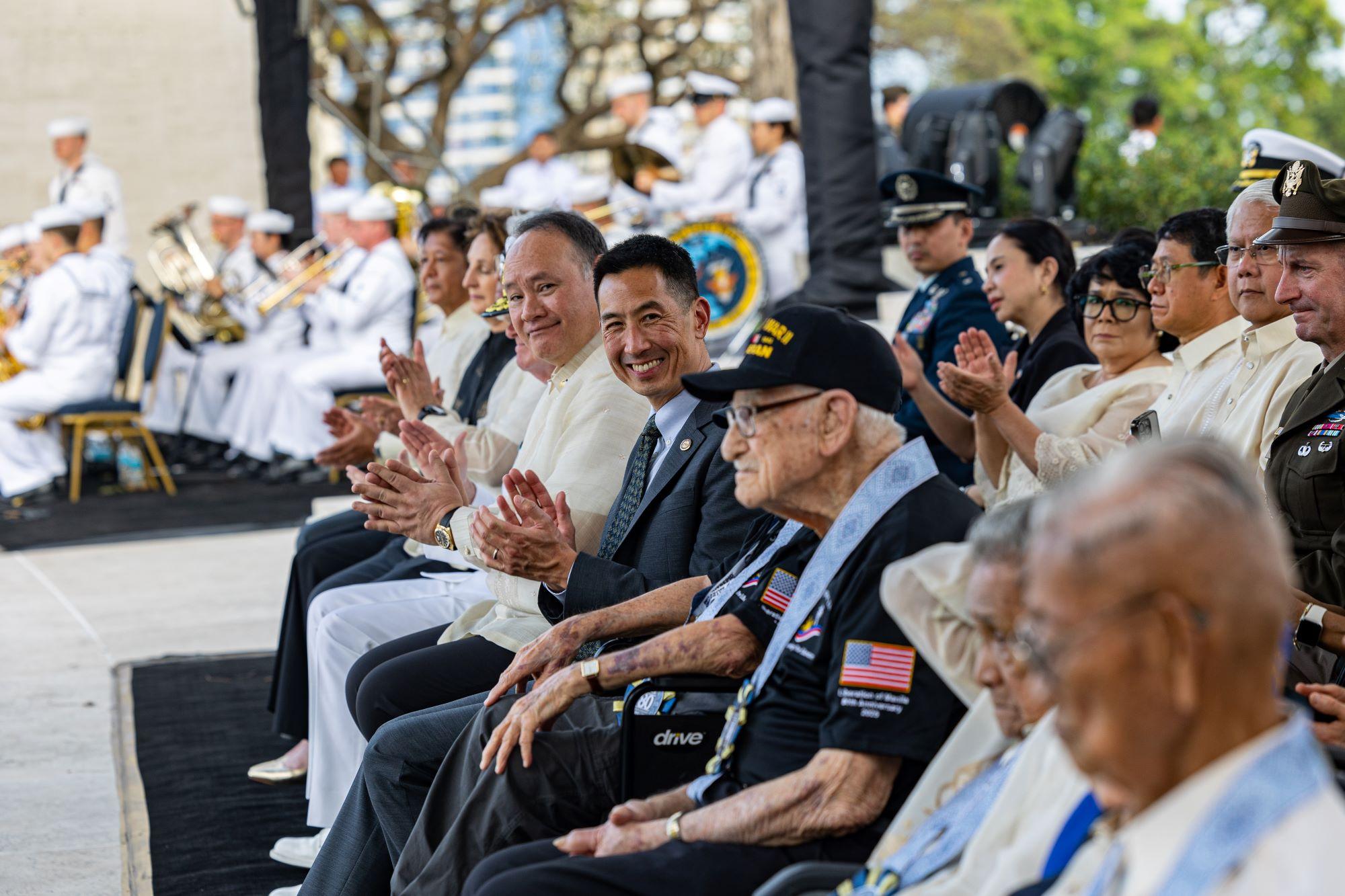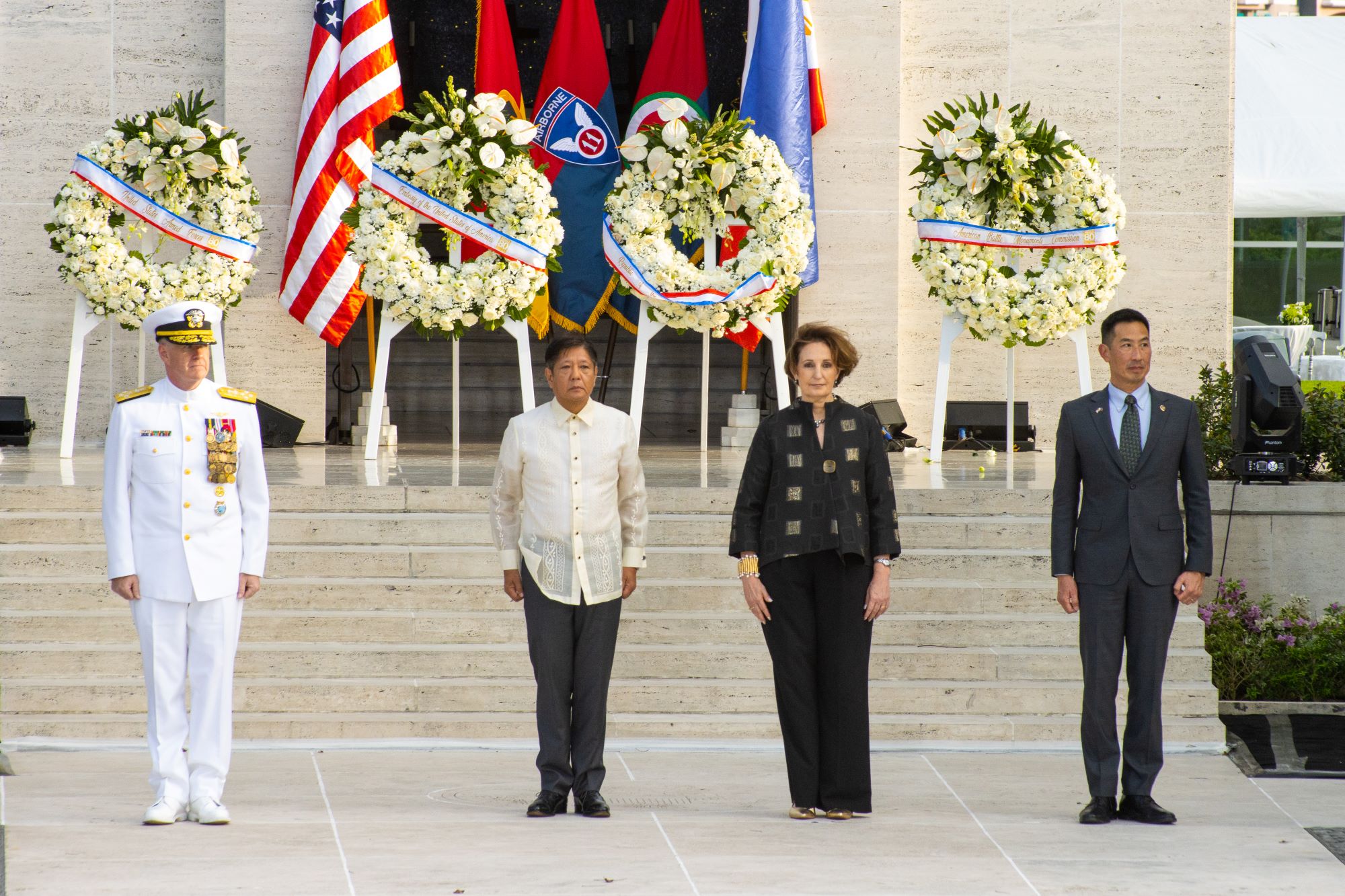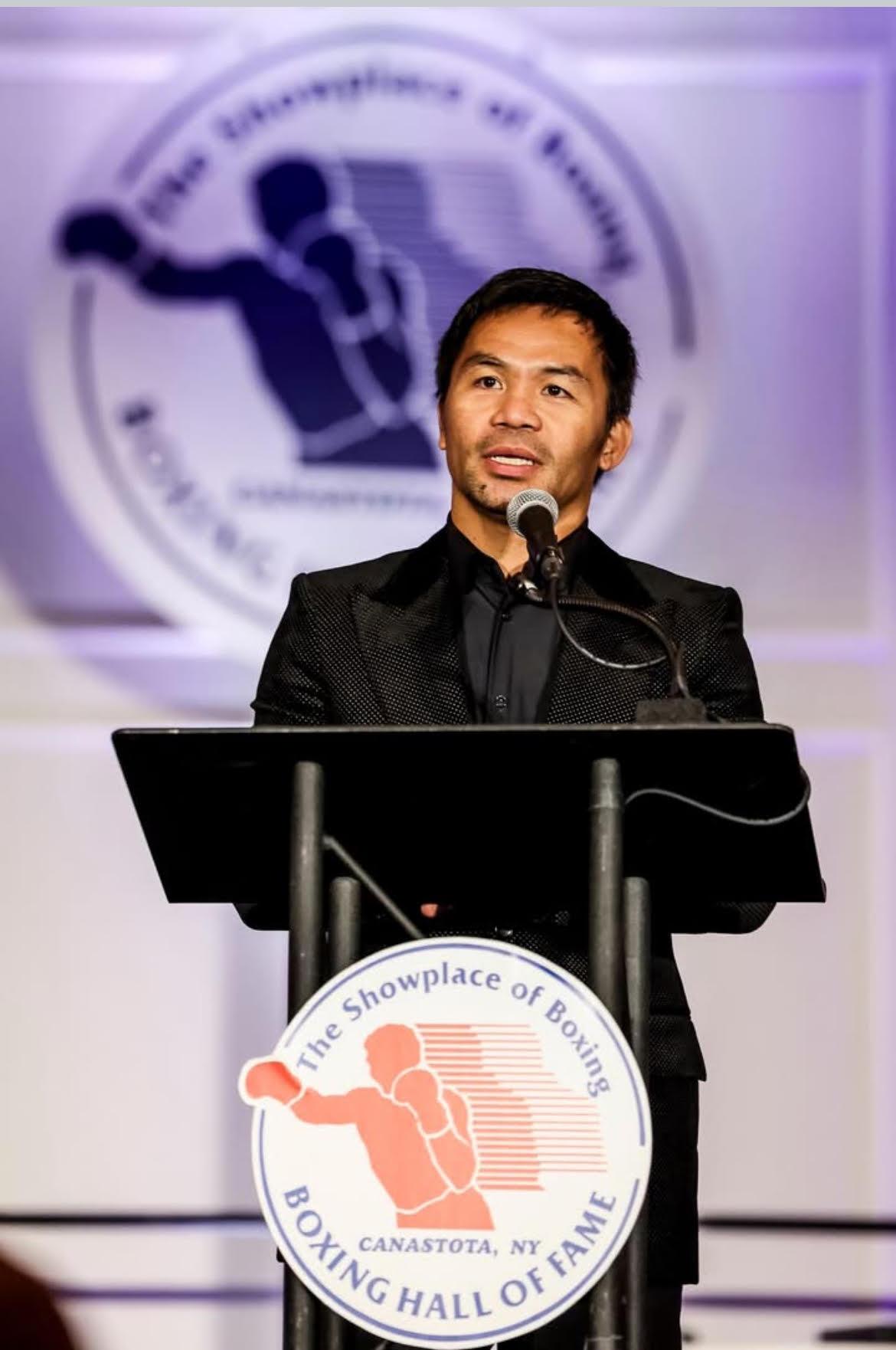ARLINGTON, Virginia – Feb. 22, 2025 – The American Battle Monuments Commission commemorated the 80th anniversary of the liberation of Manila Feb. 22 at the Manila American Cemetery along with two U.S. and four Filipino World War II veterans, President of the Republic of the Philippines Ferdinand R. Marcos Jr., U.S. Ambassador to the Philippines MaryKay L. Carlson, numerous other dignitaries and members of the public.
“The most powerful weapons system known to mankind is a free people willing to fight for freedom,” said ABMC Secretary Charles K. Djou. “That is what this site is all about, and what this ceremony is all about.”
During his remarks, Djou told the stories of Mildred Harper, a 14-year-old girl who lived in the Santo Tomas internment camp, and the story of Brig. Gen. Vicente Lim, the first Filipino graduate of the U.S. Military Academy at West Point. Harper and was killed by an artillery shell after being freed from the camp and is buried at Manila American Cemetery. Lim served side-by-side with American forces and led the Filipino resistance against Japanese rule. He died in captivity and is memorialized on the Wall of the Missing at the cemetery.
“I raise these individuals, like Miss Harper and like General Lim, because they connect our past with our present. Miss Harper, who died here in Manila during the Battle of Manila, died the same age as my youngest daughter,” Djou said. And General Lim, who is recognized here, a Filipino, connects us here with the present because his great grandson, Vincente Lim IV, works here on staff with ABMC, and he is your emcee today for this particular event.”
Besides Djou, remarks were given by U.S. Army Pacific Deputy Commander Lt. Gen. Joel B. Vowell, U.S. Indo-Pacific Commander Adm. Samuel Paparo, Carlson and Marcos.

“As the most devastated city in the Pacific, it could be easy for many of us to forget about the death and destruction in Manila at this difficult time in our history,” Marcos said. “Yet, we are all here this afternoon, 80 years since the liberation of Manila and the end of the second World War, honoring our veterans, all those who stood firm for democracy and for humanity.”
A helicopter flyover by the Philippine Air Force, a ceremonial wreath-laying, sharing of Medal of Honor stories, recognition of American and Filipino World War II veterans and the reading of a statement from Arthur MacArthur V were also included among other ceremonial elements.
About Manila American Cemetery
Manila American Cemetery was dedicated Dec. 8, 1960, to honor the sacrifices and achievements of American military forces killed during operations in the Pacific between December 1941 and September 1945. The cemetery is a reverent place where both American and Filipino war dead are honored and a visible reminder of the continued partnership between the U.S. and the Philippines.
Manila American Cemetery is the largest ABMC cemetery in the world. It is the final resting place of approximately 17,000 American service members and commemorates almost 36,300 individuals missing in action or lost at sea whose names are engraved on the Wall of the Missing. Among those, 505 bronze rosettes mark the names of those since recovered and identified.
Most of those buried at Manila American Cemetery lost their lives in operations in New Guinea and the Philippines during WWII. The cemetery includes 29 Medal of Honor recipients, 20 women, 20 sets of brothers buried side-by-side, one father and son, and 570 Filipino scouts.
About American Battle Monuments Commission:

The American Battle Monuments Commission operates and maintains 26 cemeteries and 31 federal memorials, monuments and commemorative plaques in 17 countries throughout the world, including the United States. The three memorials in the United States are: the Honolulu Memorial located within the National Memorial Cemetery of the Pacific in Honolulu; the West Coast Memorial located within the Presidio National Park in San Francisco; and the East Coast Memorial located within Battery Park in New York City. Since March 4, 1923, ABMC’s sacred mission remains to honor the service, achievements, and sacrifice of more than 200,000 U.S. service members buried and memorialized at our sites. For more information about ABMC, visit abmc.gov.






